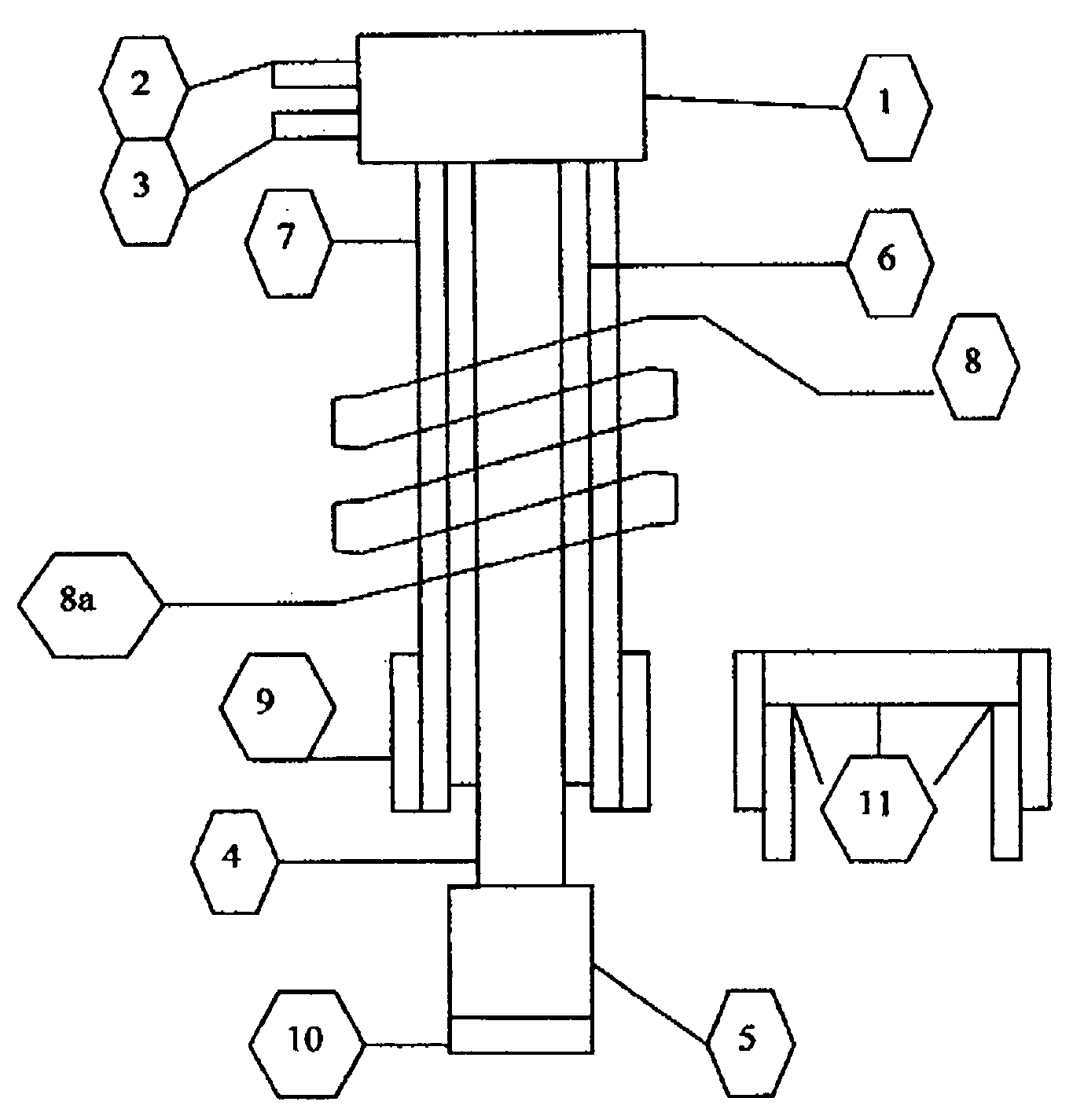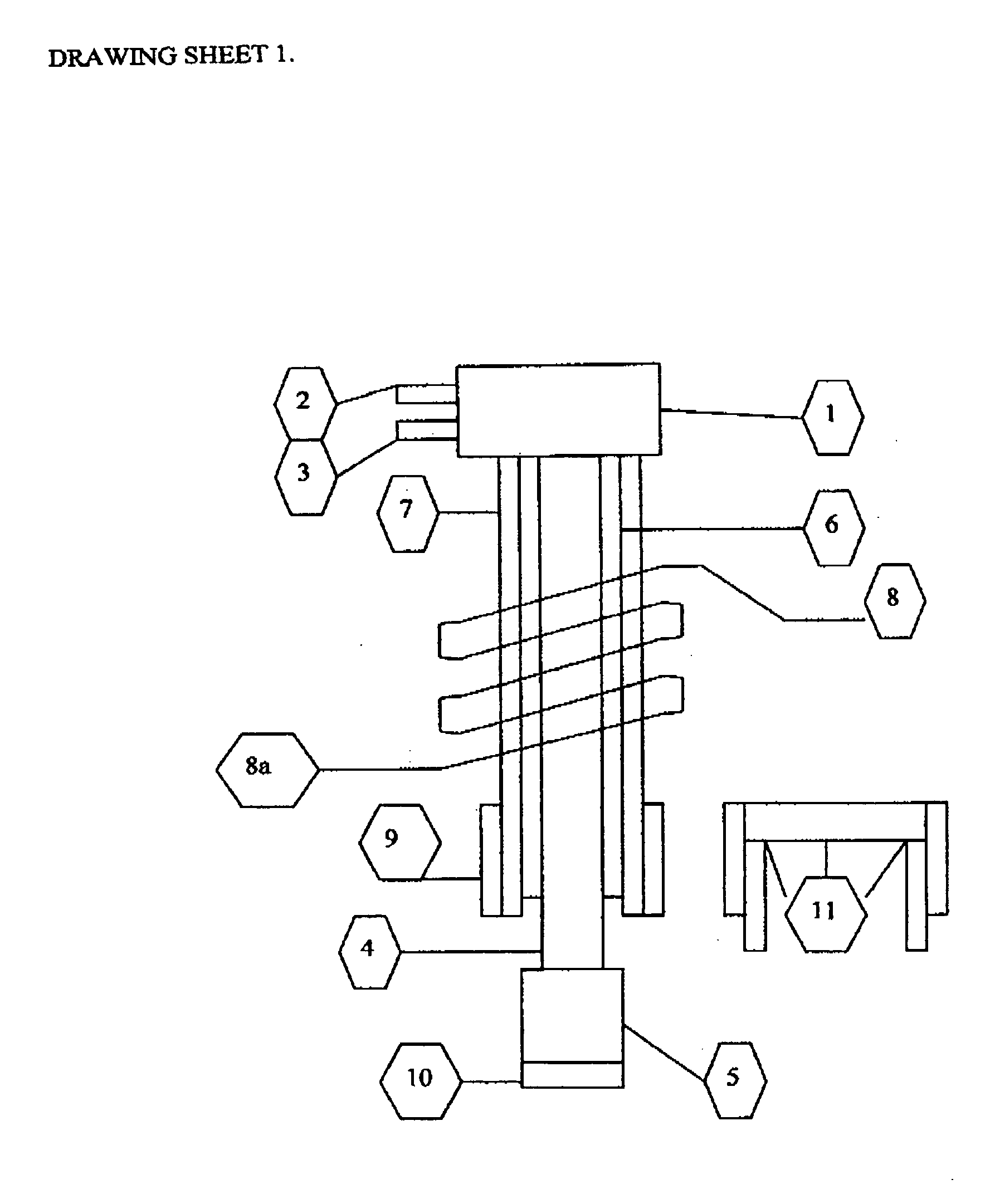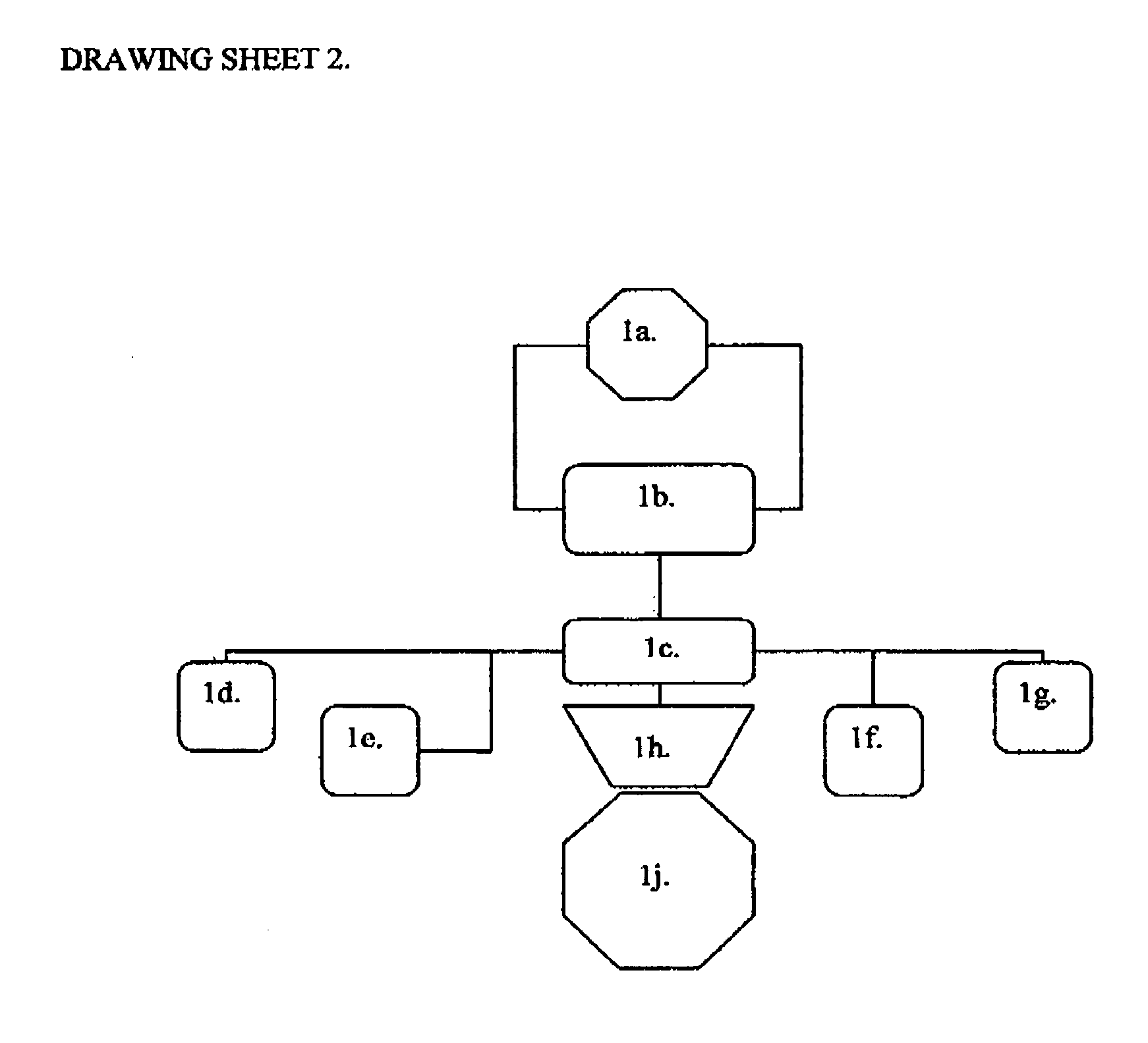Pressure augmentation "(molecular stimulation system)"
- Summary
- Abstract
- Description
- Claims
- Application Information
AI Technical Summary
Benefits of technology
Problems solved by technology
Method used
Image
Examples
Embodiment Construction
[0010] A Molecular Stimulation System according to a first embodiment includes, Circuitry for converting Direct current into a number of frequencies most suitable for molecular stimulation, including but not limited to, induction coils. Each reservoir core target provides energy, sufficient for auto-ignition of fuel in a controlled time and temperature for least pollution emissions. All reservoir core targets are energized to max sustainable energy levels of temperature for controlling combustion events. Each cylinder receives exposure to energy on demand in response to sensors and or operator input, to control temperature which controls pressure into auto-ignition of each fuel. The reservoir core target then partially recharges its energy from combustion gasses prior to total shielding, reducing the need for recharge from induction system as far as Possible, allowing lean burn, reduction of Carbon monoxide, NOx, other pollutants and improving BSFC. Each sensor varies the energy pro...
PUM
 Login to View More
Login to View More Abstract
Description
Claims
Application Information
 Login to View More
Login to View More - R&D
- Intellectual Property
- Life Sciences
- Materials
- Tech Scout
- Unparalleled Data Quality
- Higher Quality Content
- 60% Fewer Hallucinations
Browse by: Latest US Patents, China's latest patents, Technical Efficacy Thesaurus, Application Domain, Technology Topic, Popular Technical Reports.
© 2025 PatSnap. All rights reserved.Legal|Privacy policy|Modern Slavery Act Transparency Statement|Sitemap|About US| Contact US: help@patsnap.com



